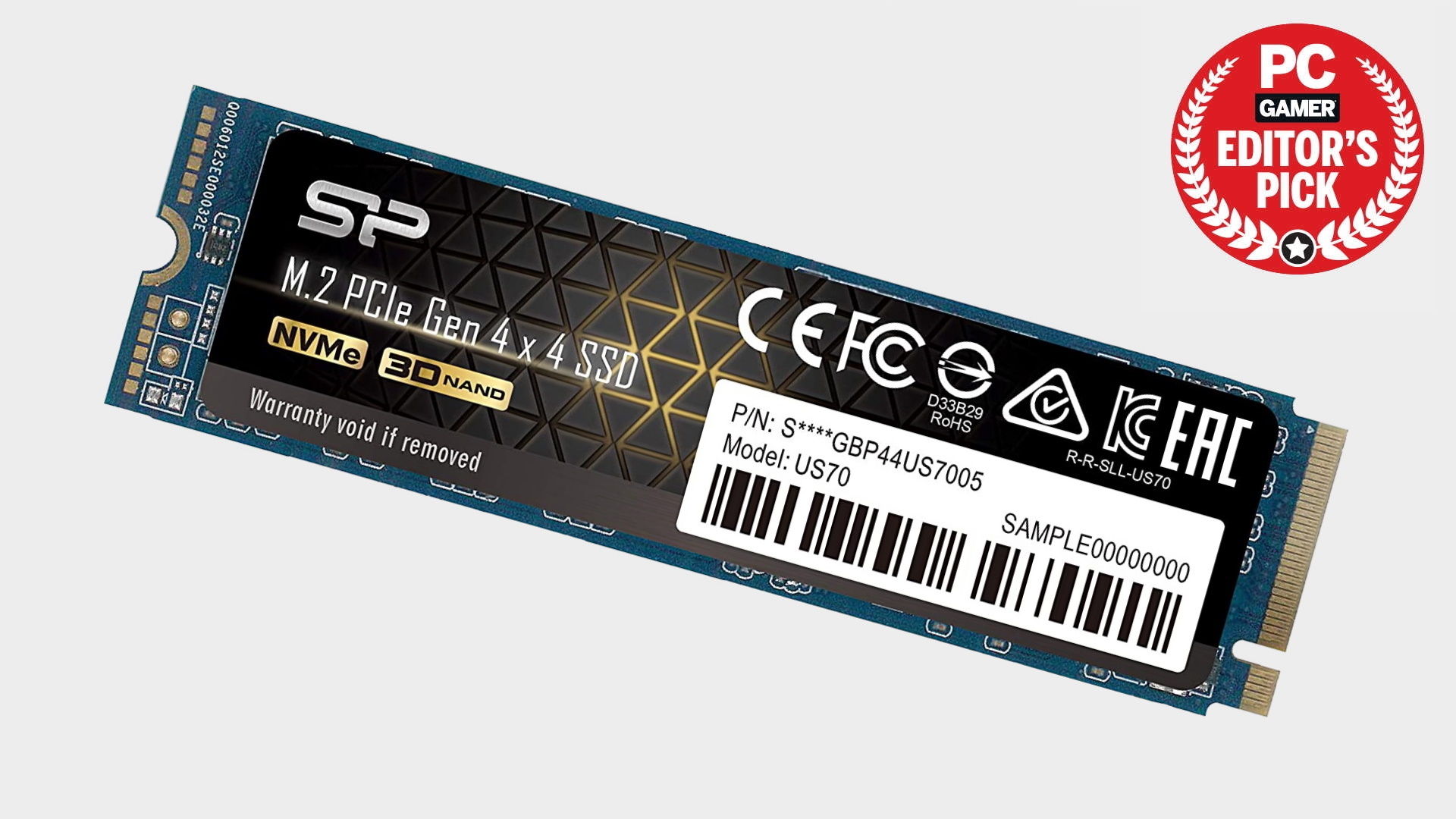Our Verdict
Incredible performance, reliability, and value for money. What more could you possibly want from a PCIe 4.0 drive right now? Other than a software suite maybe.
For
- Strong performance
- Great value for money
- 5-year warranty
Against
- No added extras
PC Gamer's got your back
You've probably not heard of the Silicon Power US70 PCIe Gen4x4 SSD, or indeed of Silicon Power itself. The Taiwanese storage company has actually been around since 2003, and has a range of storage options under its belt, with the US70 being one of its latest M.2 NVMe SSDs.
If the name hasn't given it away already, this is a PCIe 4.0 SSD, which means that it offers up some of the fastest sequential read and writes you can currently get your hands on at 5,000MB/s and 4,400MB/s respectively. And at $359 it's also one of the most affordable PCIe 4.0 SSDs you can lay your hands on right now.
Capacity: 2TB
Controller: Phison PS5016-E16
NAND: 3D NAND
Interface: M.2 PCIe 4.0 x4
Rated seq. read: 5,000MB/s
Rated seq. write: 4,400MB/s
Warranty: 5 years
Price: $359
The fact that it is a PCIe 4.0 drive means that you're undoubtedly looking at another outing for the Phison PS5016-E16 controller (which is the only PCIe 4.0 controller around right now for consumers), and sure enough, beneath the drive's warranty-busting sticker that's exactly what you'll find. While you're looking you'll also discover some DRAM (used as a cache) and the 3D NAND flash memory itself.
The NAND flash doesn't appear to be manufactured by a recognisable name, but Silicon Power counters this by offering a simply stunning TBW (Total Bytes Written) of 3,600TB. Over the lifespan of the 5-year warranty, that equates to 1.99TB a day. Or to put it another way you can completely fill this drive every day for five years and Silicon Power still has you covered. That's incredible. If that wasn't enough, the drive also boasts a MTBF of 1,700,000 hours, which may not seem particularly exciting, but that equates to a shade over 194 years if used 24/7.
There's the usual array of technologies in place to ensure that data is stored efficiently and reliably too, including wear leveling, 7 percent over-provisioning to reduce NAND flash wear, and bad block management. The use of an SLC cache in combination with the DRAM cache ensures that performance should be healthy as well, although we'll come to that shortly.
The fact that this is one of the cheapest PCIe 4.0 NVMe drives out there right now would make it an interesting proposition in its own right.
One thing to note with the Silicon Power US70 is that the low pricing equates to nothing else in the box other than the drive itself. There's no heatsink here, and you'll search in vain for a download code for a popular piece of imaging software. This isn't necessarily a problem, as upgrading to an SSD is a great time for a fresh install of Windows, but if you're looking for an easier life, then you may want to look elsewhere.
The one piece of software you do get access to on its download page is the SP ToolBox, which provides the usual array of drive monitoring and diagnostic information. It's nothing too fancy, and it isn't really needed for day-to-day activity, but it's good to have the option if you do want to snoop on the state of your drive.
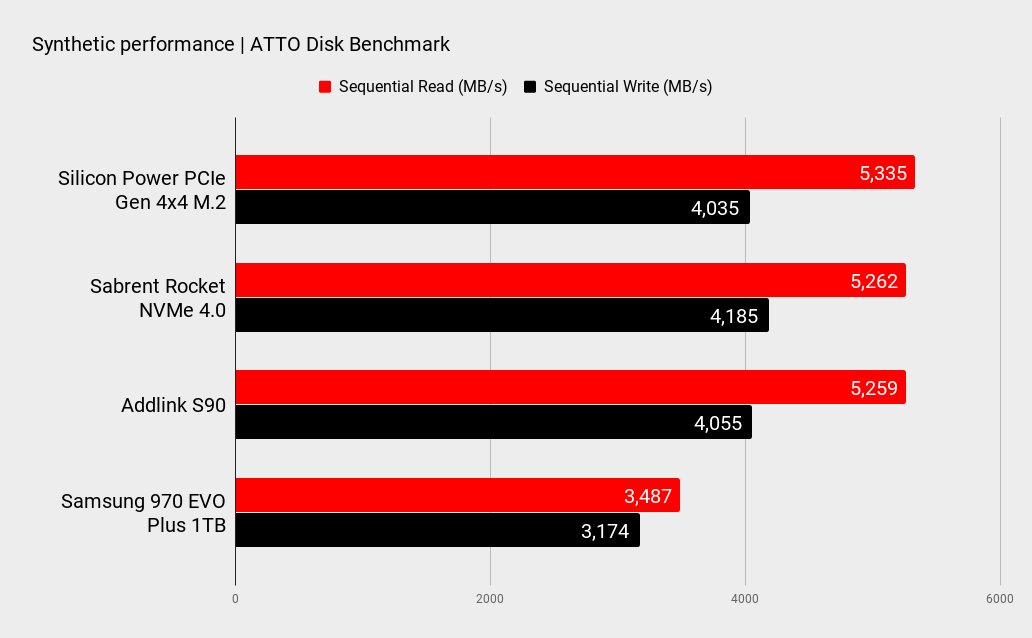
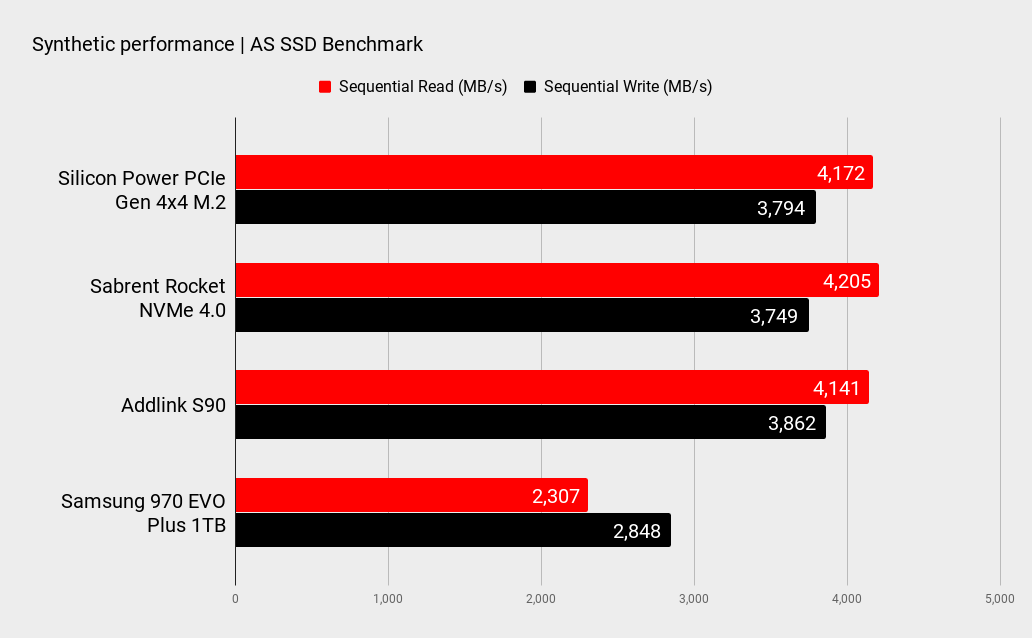

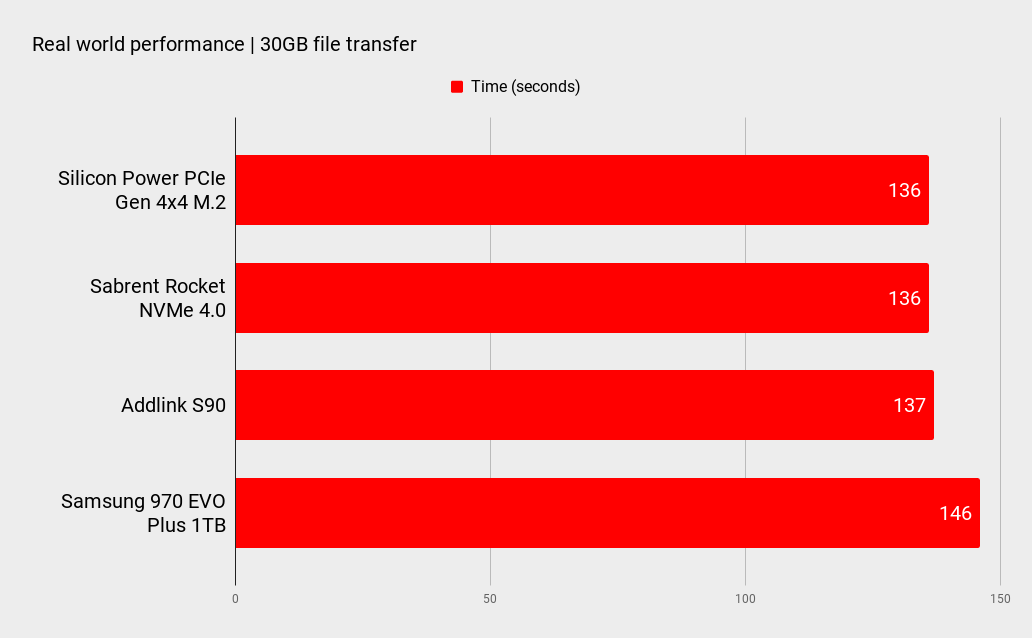
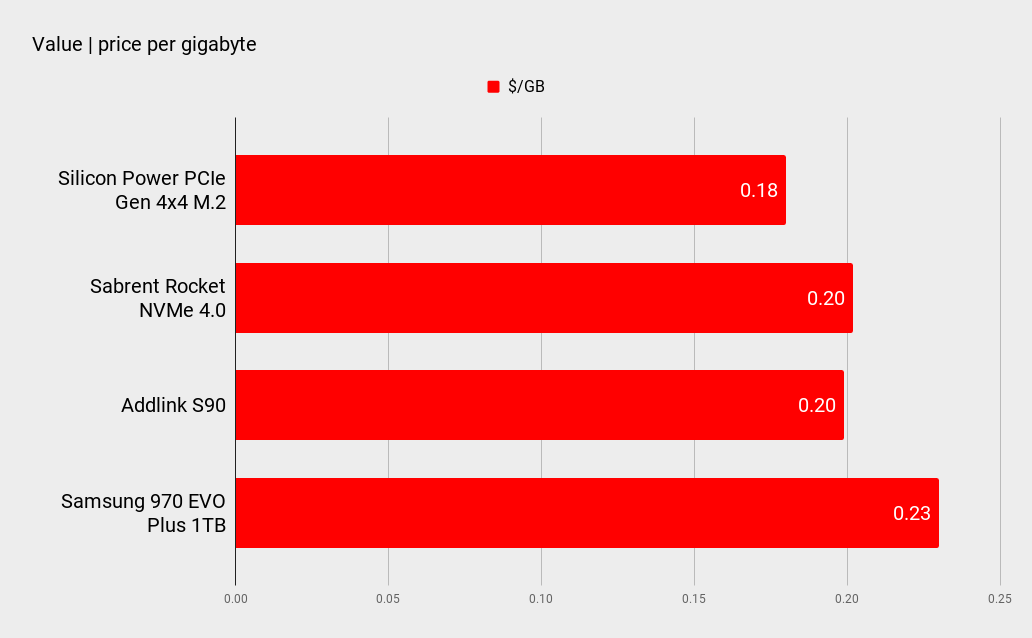
In terms of performance, there's a lot to like here. PCIe 4.0 drives can hit incredible numbers compared to PCIe 3.0 SSDs, particularly when it comes to sequential throughput. While it's true that you rarely hit such situations in normal use, there are improvements on the way with the likes of DirectStorage promising to unlock the true potential of NVMe for gaming.
The Silicon Power US70 is no slouch when it comes to 4k performance either, managing a notable lead over the Samsung 970 Evo Plus, which is our top recommendation in our best NVMe SSD guide. The real world test of copying 30GB of data across the drive is also healthy, taking just 2 minutes and 16 seconds, which equates to 225MB/s.
Unsurprisingly there is very little between this drive and the two other PCIe 4.0 drives we've looked at recently, the Addlink S90 and Sabrent Rocket PCIe 4.0. This is because all three of these drives use the same Phison E16 controller. It thus comes down to a matter of pricing and the rest of the bundle when it comes to working out which one you should buy.
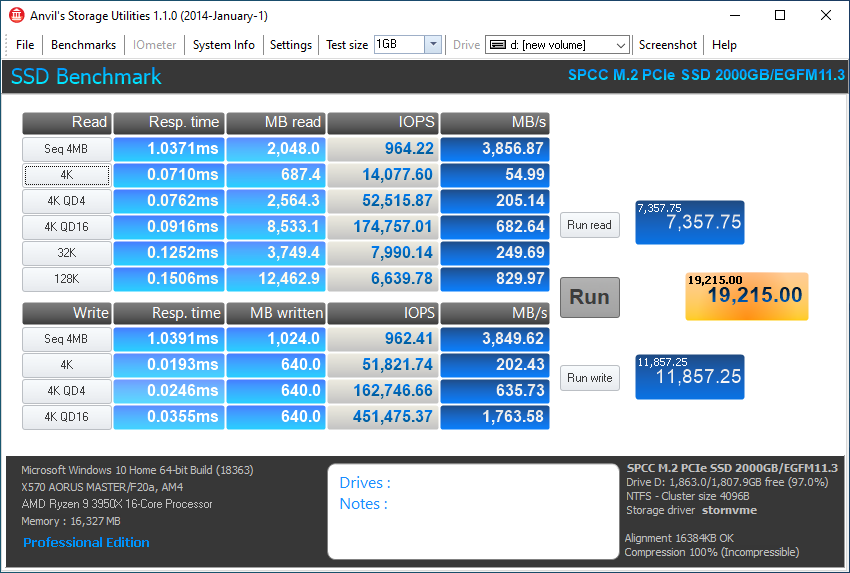
The fact that this is one of the cheapest PCIe 4.0 NVMe drives out there right now would make it an interesting proposition in its own right. That it doesn't hold back when it comes to the performance makes it even more interesting. Follow that up with the frankly incredible warranty, and you have a drive that ticks all the important boxes. Yes, it may be lacking in the extras department, but that's a hit I'm happy to pay for a lower price tag.
Of course $359 isn't really what you'd consider cheap, even if it does represent great value. The good news is that the 1TB drive rolls in at half that, or $179 to be precise. That's still great value, and undercuts the likes of the Sabrent Rocket PCIe 4.0 and the Addlink S90 by $20, while offering pretty much identical performance.
The only potential fly in the ointment here is Samsung's forthcoming PCIe 4.0 drive, the 980 Pro, which is expected to land shortly and offer performance up to 7,000MB/s. Of course that will probably be a much more expensive drive (it is a Pro model after all), so shouldn't be a direct competitor to this, but we do expect other drive controllers to appear after that, and potentially in more-affordable SSDs. Still, there's always something just around the corner that is better, but right now this is easy to recommend.
Incredible performance, reliability, and value for money. What more could you possibly want from a PCIe 4.0 drive right now? Other than a software suite maybe.
Alan has been writing about PC tech since before 3D graphics cards existed, and still vividly recalls having to fight with MS-DOS just to get games to load. He fondly remembers the killer combo of a Matrox Millenium and 3dfx Voodoo, and seeing Lara Croft in 3D for the first time. He's very glad hardware has advanced as much as it has though, and is particularly happy when putting the latest M.2 NVMe SSDs, AMD processors, and laptops through their paces. He has a long-lasting Magic: The Gathering obsession but limits this to MTG Arena these days.
